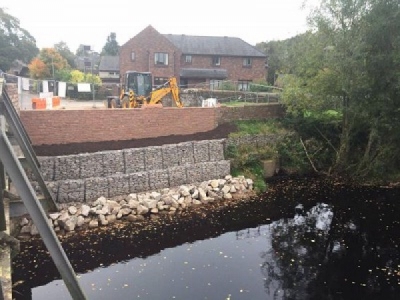
Posted on October 31, 2016
The Environment Agency, which would be responsible for carrying out the work, says that its modelling of the area would not reduce the risk of further flooding.
Around 170 homes and businesses in the town were flooded when Storm Desmond struck on December 6. In the aftermath of the flooding, the Environment Agency has been carrying out work to repair flood defences in Appleby, which it says is near completion.
This includes repairs to the defence walls at Holme Farm Bridge, which are expected to be completed in “the next few weeks” as well as repairs to the flood embankment at the cricket pitch.
The agency has also been clearing debris from the river channel and removing damaged trees from the banks of the Eden. A permanent flood defence wall at the entrance to the town’s swimming pool car park has also been added, replacing the manual mountable defences.
Matt Crump, Environment Agency manager, said: “The bulk of our work in Appleby has involved repairing flood defence structures to maintain levels of protection.
“We’re now developing plans to manage local flood risk in the long term using the funds we secured from Government.
“We’re keen for local people to be involved, so we could encourage residents to join the Appleby Flood Action Group, who act as our main point of contact.
“We’re aware that people would like us to ‘dredge’, or remove gravel, from the River Eden in Appleby, but our modelling shows that it wouldn’t reduce flood risk to local properties.
“We took cross-section surveys downstream of St Lawrence Bridge, on the swimming pool bend and downstream of Holme Farm Bridge, which showed the gravel shoals had changed in shape and size since Storm Desmond but, importantly, have no impacted the amount of water that can flow down the river.
“We’ll continue to monitor the size of these shoals by surveying the shape of the river bed and remove gravel if they reach trigger levels that would increase flood risk to local properties.”
Source: News & Star





